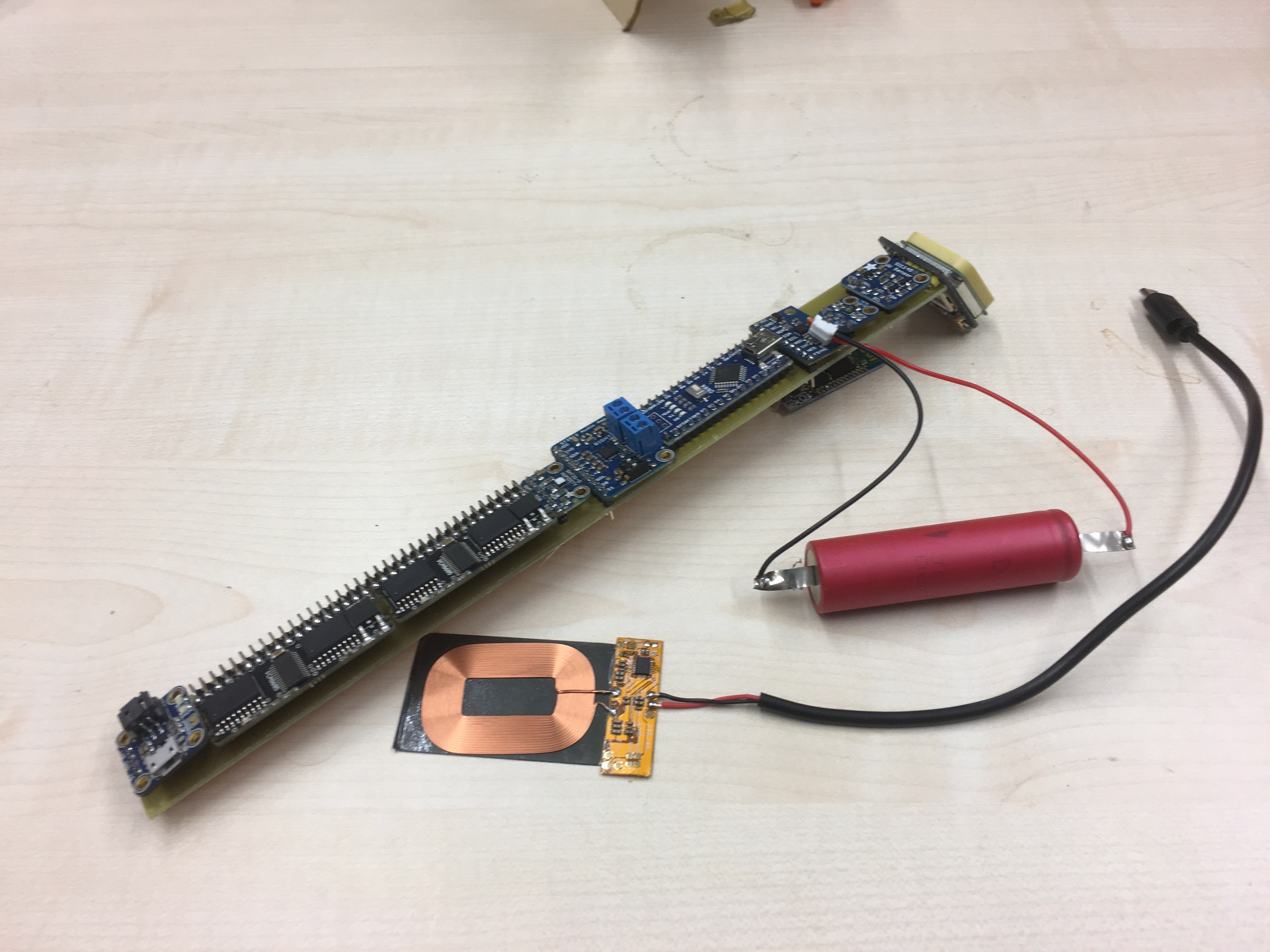-
Programming and Connections
10/16/2017 at 01:32 • 0 commentsSo far the system consists mostly of I2C devices, which can be easily controlled with the Arduino Nano, libraries for most sensors exist. A minor challenge is that both GPS and Bluetooth use the serial port, one of them has therefore to revert to a software serial port. Since GPS will be checked if needed, while the Bluetooth communication can be also triggered from outside, the Software Serial port will be used for the GPS module. The Bluetooth module can therefore listen with Hardware-Read if messages arrive, while messages from the GPS module should only arrive if requested.
This setup might change if we switch to a another wireless communication method. ZigBee would still use the serial connection, but other mesh network able communication devices (RFM 70) use other serial protocols, which might allow to get away from this software solution
-
Safety methods
10/16/2017 at 01:24 • 0 commentsWith all the already used electronic for navigation, we can also integrate safety methods:
Some issues seems to be:
- UV light: Reefs are sensible to UV protection sprays and lotions, a warning if to long exposed to UV light should be necessary, which can be done with an UV sensor and timer.
- Tides: Depending on time, a warning can be issued when tides change (as well as using the timer to regualting snorkeling duration).
- (The wireless connection could allow to call for help in emergency situation, but since you can't count on it that's not a real safety feature)
- The most interesting part might be the shallow water blackout problem, since the problem is that there exist no indications besides no movement, which are hard to detect when movements can be also happen passive because of tides or waves. At the moment we tend to integrate a capacitive sensor area on the snorkel, detecting the water level inside: If it stays a certain time without getting air inside in between, we would then first activate a haptic warning for sort of a dead man switch (user has to press a button to prove he is still conscious), otherwise a warnign will be sent (optimal would be then activating a self-infalting live jacket to get the head directly above water)
-
Navigation tasks
10/16/2017 at 01:11 • 0 commentsFirst idea was to get simply the direction away from the beach. This was then extended away from just a compass towards GPS, allowing a precise return to a starting point as well as way points: One can be guided with GPS and the haptic feedback along an underwater path to nice spots or preventing to get into sensible areas without underwater landmarks. Furthermore, one could send direction infos to friends when finding nice spots by themselves.
-
Fin against Snorkel tip
10/16/2017 at 01:06 • 0 commentsBasic Planning: Where to place the electronic - and which electronic
The first idea was using a fin at the back, additional coming out of the water independent of the snorkel. The advantage had been that the belt would run idepentend from the snorkel and didn't need to be adapted for different snorkel forms. Another idea was to keep the weight near the body. But there were disadvanteges : First a bigger system has to be designed to stabilize such a system on the back, resulting in more weight, worse aqua flow (especially when crossing waves) and an overall bigger belt. Furthermore for safety and better encapsualtion the system should be as small as possible and kept mostly above water, which works well with the snorkel extension. As an additional benefit, the battery is now in the missle inside and double encapsulated, as well as far away from the head for safety concerns. Therefore, the first and already milled system was not used and components further reduced (less vibration motors, no audio).![]()
SnorkelNavi
A navigation system for snorkeling - feel haptic the direction to starting point, underwater routes and send directions to friends
 JanThar
JanThar